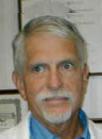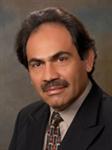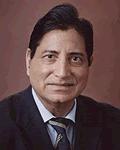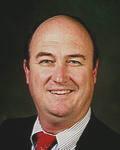In an emergency situation it saves not only professionalism, but also the time when human health, who got into a critical situation, on the verge of life and death, and when to the victim can to provide the most effective assistance.
Human organism is arranged by nature, so that the maximum function at sudden and serious injuries, efficiently maintains stable condition for about 1 hour.
Then there comes period of gradual depletion of strength and body "disables" less desired parts of the body, seeking to ensure the remnants of vitality your most important part - the brain.
During the first hour after an accident - medical assistance most effectively and allows to minimize the development of dangerous complications.
The primary and secondary INSPECTION
Initial examination of the victim is made to find the cause, presenting an immediate threat to life at the time of inspection:
- Airway obstruction,
- External bleeding,
- Signs of clinical death.
Secondary inspection (no more than 2-3 minutes).
Assess the condition of the victim (in consciousness, unconscious, pulse, respiratory rate) before starting aid and transportation to a hospital.
- Assess the value of the pupils and their reaction to light.
- Determine the mechanism of injury.
- Determine the time elapsed since the onset of the disease or injury.
A statement of clinical death
For the establishing the fact clinical death sufficient of three signs:
1. Loss of consciousness.
2. The absence of breathing.
3. The absence of a pulse in the carotid arteries.
Pupil dilation is an optional feature and is not always manifested quickly.
After confirmation of the main signs of clinical death, to start a basic cardio pulmonary resuscitation (CPR).
The time factor is crucial in achieving a positive outcome of CPR.
From the moment of cardiac arrest before the basic CPR should pass no more than 2 minutes.
SIGNS OF biological death
The fact of the onset of biological death may be determined by the availability of reliable signs.
Reliable signs of biological death:
1. Cadaverous spots - begin to form within 2-4 hours after cardiac arrest.
2. Rigor mortis - manifested 2-4 hours after cardiac arrest, reaches a maximum at the end of the first day, and spontaneously passes for 3-4 hours.
The set of signs, allowing to ascertain the biological death until no credible evidence of:
1. The absence of cardiac activity (no pulse on the carotid arteries, heart sounds are not listened).
2 the absence of cardiac activity for more than 30 minutes at normal temperature environment.
3. Absence of breathing.
4. The maximum dilation of the pupils and their lack of response to light.
5. The absence of corneal reflex.
6. The presence of post-mortem hypostasis (dark blue spots) in the sloping parts of the body.
Simple methods RESUSCITATION
From the correctness of conducting primary methods often depends the outcome of the intensive care unit, and subsequent fate the victim.
The three basic rules of basic CPR:
A - airways - ensure patency of the upper respiratory tract;
B - breathing - start mechanical ventilation (mechanical ventilation);
C - circulation - start chest compressions.
The technique involves:
1. Extension of the head in the cervical spine.
2. Nomination of the lower jaw forward and upward.
3. The opening of the mouth.
Closed cardiac massage
- The victim has to lie on the hard ground.
- Raise the injured leg (is provided the flow of blood to the brain).
- Stand on the side of the victim, put the base of hands on the lower third of the sternum, the second brush is placed on top of the first, so that direct hands and the shoulders of massaging are above the breast of the victim.
- Sharp pressure on the sternum straight arms with using body weight leads to compression thorax by 4-5 cm and compression of the heart between the sternum and spine.
- Closed cardiac massage should be carried out with sufficient but not excessive force (do not break ribs).
- The frequency should be 100 jolts per minute.
Artificial lung ventilation (ALV)
Ventilation is effective only in the absence of mechanical obstruction in the upper airway and hermetic in air intake.
Restore the airway.
In the presence of foreign bodies, vomit in the pharynx, larynx, remove them.
- The victim's head tilts back as much as possible to ensure free access of air into the trachea.
- Stand on the side of the victim, one arm hold his nose,the other - open his mouth, slightly pushing the victim's chin. Mouth cover with gauze bandage (handkerchief).
- Make a normal breath, press firmly with his lips to the mouth of the victim and evenly exhale for 1 second, then remove from the mouth of the victim, watching as the victim's the thorax is lowered during expiration.
ALV is carried out in the mode that provides the slow and deep filling the lungs. The volume of air blown (one breath) 500-600 milliliters.
Effective artificial respiration, carried out in conjunction with the chest compressions, requires rhythmic repetition of uniform insufflation with frequency 8-10 in 1 min, or Two "inhalation" - 30 thorax compressions.
Criteria for the termination CPR
Resuscitation may be terminated only in the following cases:
- If in the course of CPR found out that it is not shown to the patient;
- If by using all available methods CPR is not marked signs of effectiveness within 30 minutes;
- In the presence danger to the health of conductive intensive care;
- at occurrence a situation, threatening to the lives of others.
hide
 Emergency Medicine - the complex therapeutic and preventive measures implemented in emergencies for saving life of the affected (sick), prevent complications and rapid recovery of their health.
Emergency Medicine - the complex therapeutic and preventive measures implemented in emergencies for saving life of the affected (sick), prevent complications and rapid recovery of their health. 






